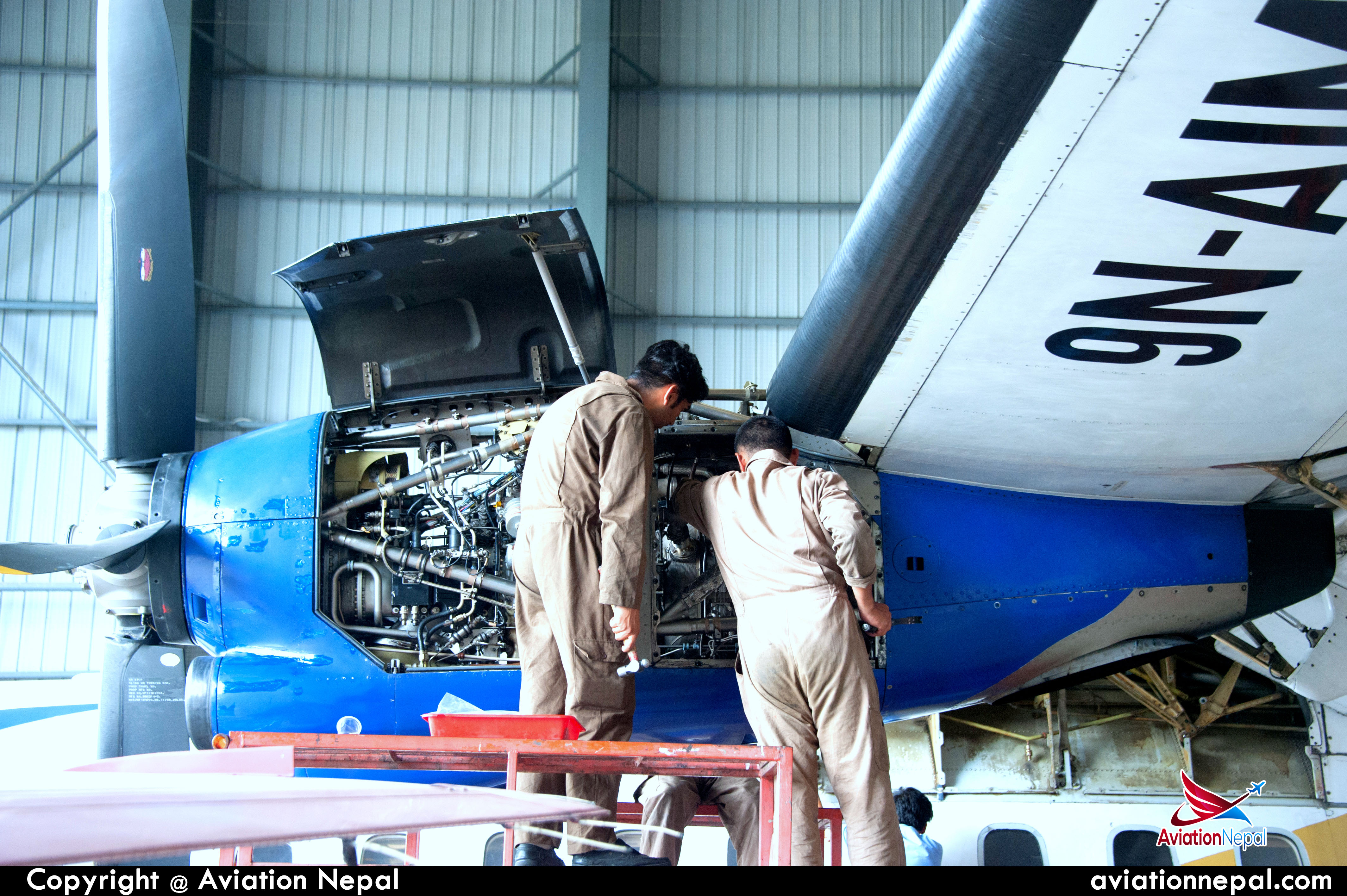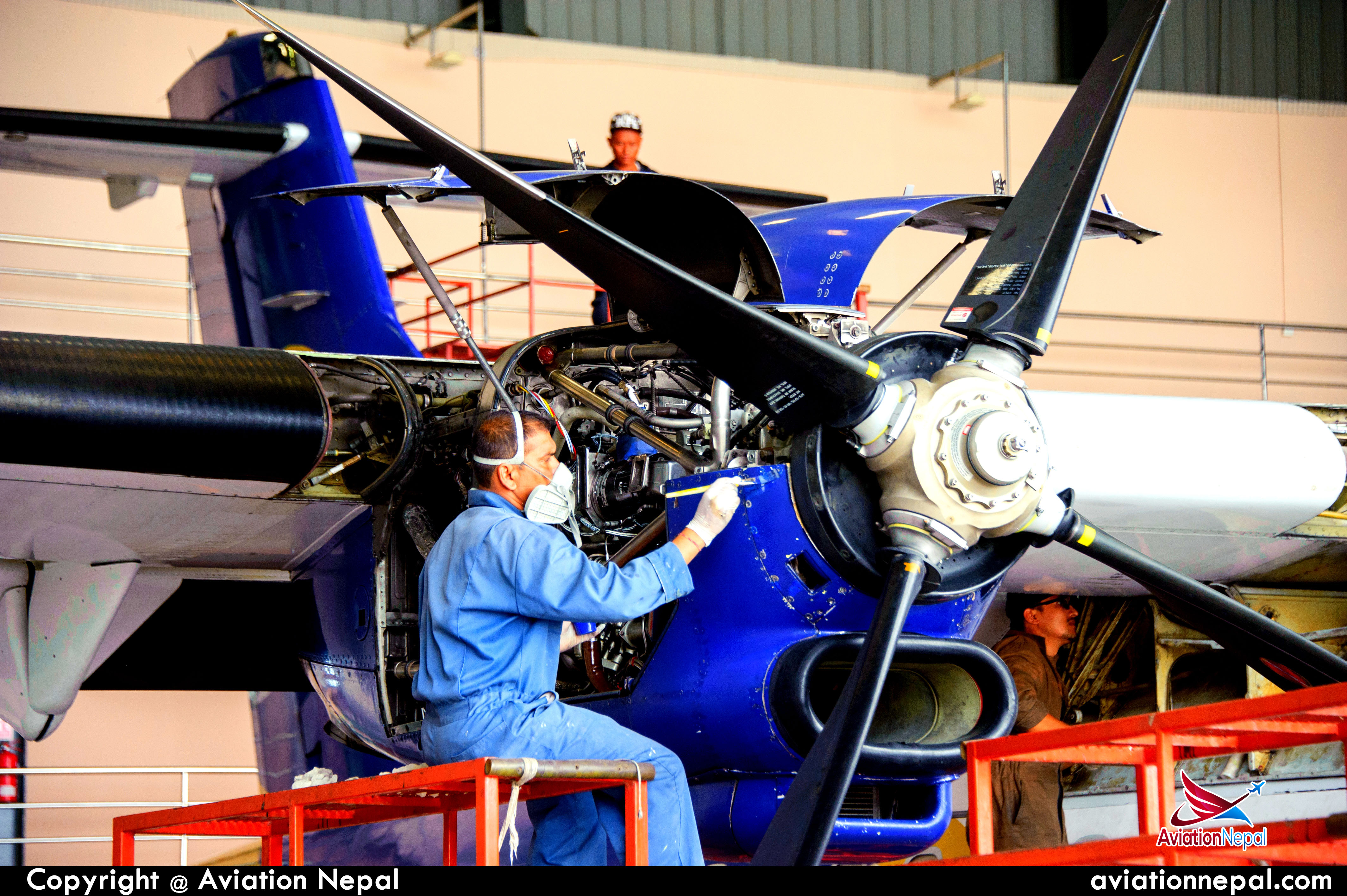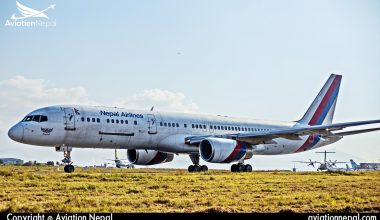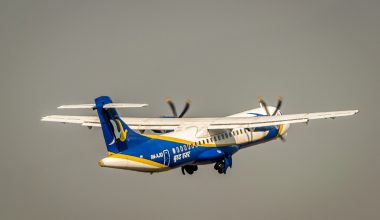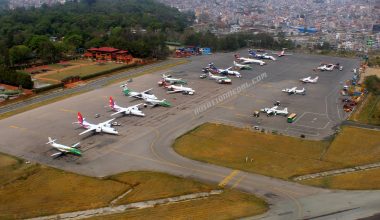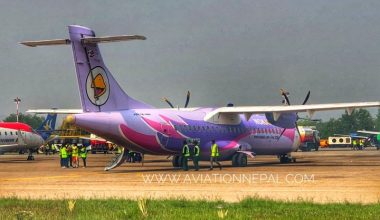Close Look to Buddha Air Hangar with AviationNepal (Gallery)
September 04, 2016-Kathmandu
Buddha Air’s state-of-the-art closed door hangar is a Civil Aviation Authority of Nepal (CAAN) approved NCAR 145 maintenance organization that stands as a pride of not only Buddha Air, but Tribhuvan International Airport (TIA) as well. The hangar is the first of its kind in Nepal, and among a very few in South Asia.

This hangar was constructed as a vision of the only private airlines in Nepal, flying both domestic and international routes. Buddha Air holds an outstanding record of aviation standard and excellence in safety. It occupies a major share of passengers in the aviation market of Nepal. Buddha Air operates regular scheduled flights to Dhangadhi, Bharatpur, Nepalgunj, Pokhara, Bhairahawa, Simara, Janakpur, Tumlingtar, Biratnagar and Bhadrapur in its domestic routes. It also operates chartered flights to Paro, Bhutan and flights to Varanasi, India. It also operates early morning mountain flights aptly named Everest Experience.

This hangar facility was built inside the premises of the only international airport of Nepal. It covers an area of 37,000 square feet and is built at a cost of US$ 2.5 million. The hangar houses aircraft spares inventory worth up to US$ 9.3 million and the Technical and Operations Department. It has the capacity to accommodate an Airbus 320 or Boeing 737 series aircraft.
Behind every aircraft that is worthy to fly in the sky, there are hands of a team of engineers and technicians who work from hours to days to make the aircraft ready to fly. Their efforts go unnoticed by the public. People only think about pilots, and the work of the engineers and technicians are put under the shadow. Pilots and engineers are both significant to produce the lift in the metal tube and fly it in a controlled way in the sky as it carries a number of lives inside it.
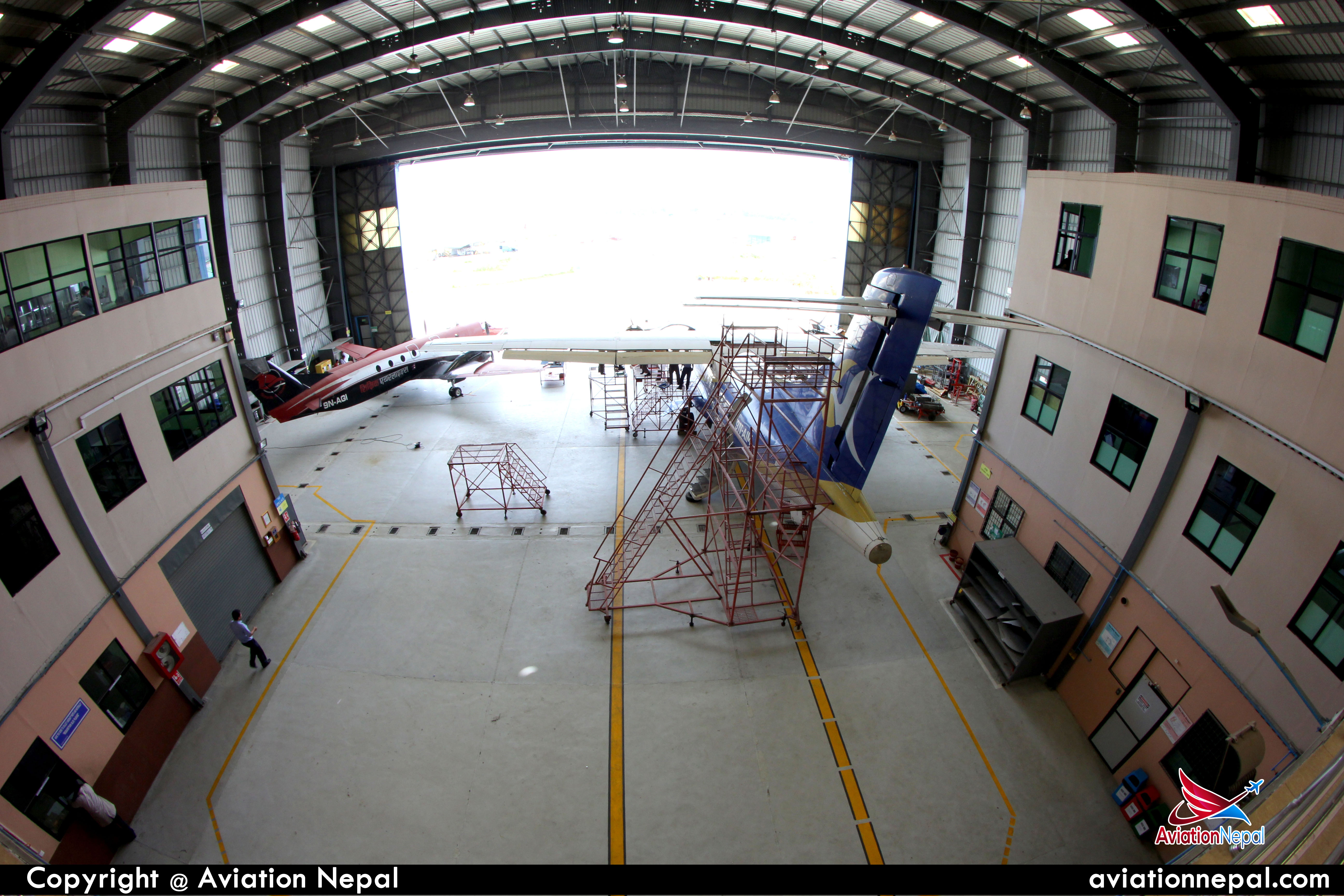
Aviation Nepal is privileged to share our walk around the work station of these hardworking engineers and technicians at the hangar – who they believe is their second home. During our visit to the hangar and talking with the people who have been working day and night on small to major parts of the aircraft, we came to the conclusion that their work requires a lot of skill, knowledge, preparation, hard work, documentations and approval just to make an aircraft fly in the sky for an hour.
The Manager of Technical Support Division Senior Engineer Mr. Santosh Kumar Khati believes that the technical department ensures that the aircraft is always in airworthy condition. According to him, the maintenance of an aircraft will start from the process of allocating to preparing documentations of tools, resources, spares and time needed for the overall servicing of the aircraft. The servicing will then be forwarded to major divisions responsible to carry out the processes.

- Technical Supplies and Store Division
This department will identify and dispatch the logistics of aircraft spares, materials and tools required; and control the inventory of major stores.Spares Inventory For Aircraft of Buddha Air Spares Inventory For Aircraft of Buddha Air - Base Maintenance and Workshop
This department is responsible for the major maintenance function of the aircraft. The base maintenance is empowered by the well-stocked and updated workshops such as wheel hub and brake shop, steel metal shop, composite repairs shops that are essential and are located inside the hangar facility.Workshop of Buddha Air
Workshop of Buddha Air - Line Maintenance Office Line maintenance is responsible to handle any defects that may arise. These include pilot reported defects, including all daily inspections, preflight inspections and weekly inspections. With the above departments, Technical Records, Ground Support, Engineering Planning and Engineering Services, Technical Library and Quality Assurance Department are the backbone of Buddha Air’s hangar that performs world class maintenance activities for its aircraft that proves to be one of the safest airlines of Nepal.
Paint Touch Job Being Carried Out The scheduled maintenance is extensively inspected for any further possible issues so that there can be no major sign of faults until the same aircraft revisits the hangar for the next scheduled maintenance. This hangar has huge amount of spares which are well maintained and well documented and tools that are sent to be recalibrated at regular intervals according to the procedures. In an addition, every time an aircraft will enter the hangar, it will get a paint touch job which helps to provide the fresh, shiny and evergreen beautiful look to the aircraft. Mr. Khati and Senior Quality Assurance Engineer Mr. Upendra Lal Shrestha confirmed that every job inside the hangar is strictly compiled with the rules of CAAN and International Civil Aviation Organization’s (ICAO) standards and they never leave even the slightest compromise when it comes to the safety of the passengers and maintenance of any aircraft that enters the hangar of Buddha Air.

Buddha Air’s hangar has all the required facilities that have attracted domestic and international airlines to enter the hangar for maintenance jobs. Recently, it welcomed an ATR aircraft of NOVOAIR from Dhaka, Bangladesh for scheduled maintenance service. Simrik Airlines’ Beechcraft 1990C series aircraft was also seen under maintenance inside the hangar during our visit.

Turns out, the relationship with the spare suppliers and aircraft manufacturers is age’s old but still growing stronger. This ensures sound and quick delivery of parts and efficient communication in case of enquiries on technical issues which are beyond the coverage of manuals. In this case, the manufacturer is quickly informed about the issue and they will produce a standard maintenance procedure that will be followed by Buddha Air to rectify the respective issue, therefore never going beyond the procedure according to Mr. Khati.

In this way, Buddha Air practices the most advanced and efficient way of operations of its aircrafts, proving the undoubted safety records that has been an example to other domestic and international airliners. The respect and encouragement between staffs is another attraction here. The cooperation and coordination among them allows the hangar’s smooth operation. All of them seem to be emotionally attached here and are performing their responsibilities well. Mr. Khati utters with emotion while speaking about this hangar as their pride. He was proud to point to us a certificate which displayed the IPMA Project Excellence Award – Bronze winner in Medium and Big- sized projects for Hangar Construction in the year 2014.

This exemplary existence of hanger inside TIA also seemed to be overlooked by the airport authorities. The hangar had lacked the basic facilities that needed to be provided by airport authority including electricity and lightening systems on the taxiways. Buddha Air repaired a taxiway to tow their aircraft from the taxiway to their hangar on their own. Additionally, the scattered scrap aircraft is causing difficulty in movement of aircraft around the hangar area. Despite these operational difficulties, Buddha Air’s hangar is providing its continuous support to uplift the standard of aviation in Nepal.



